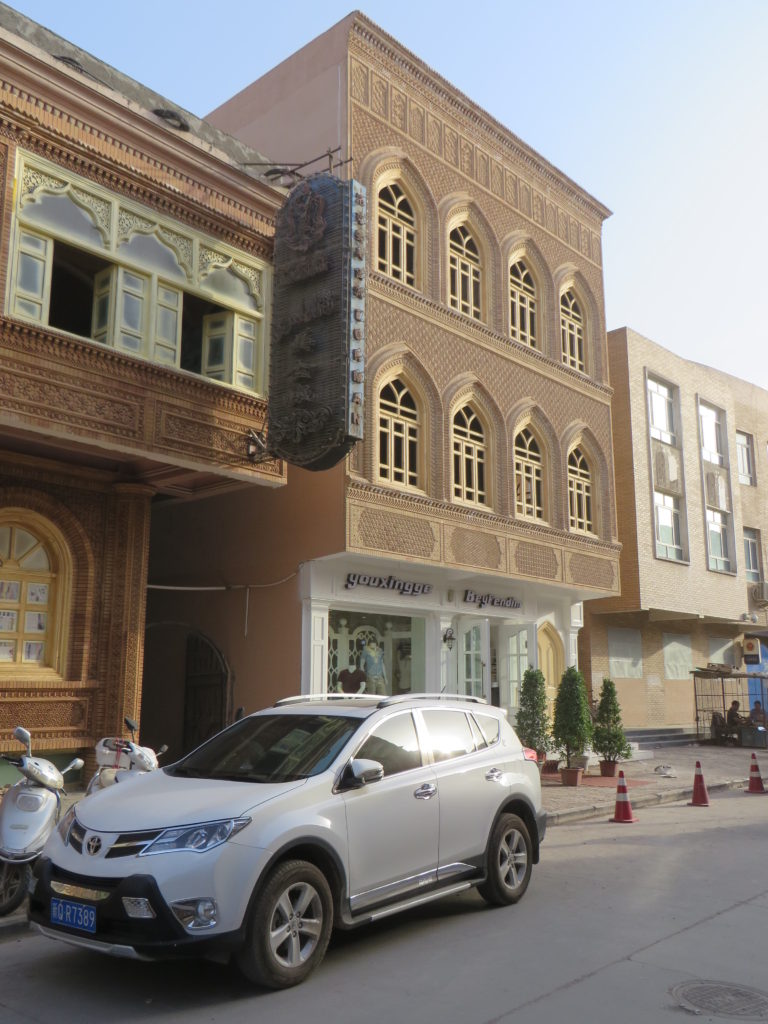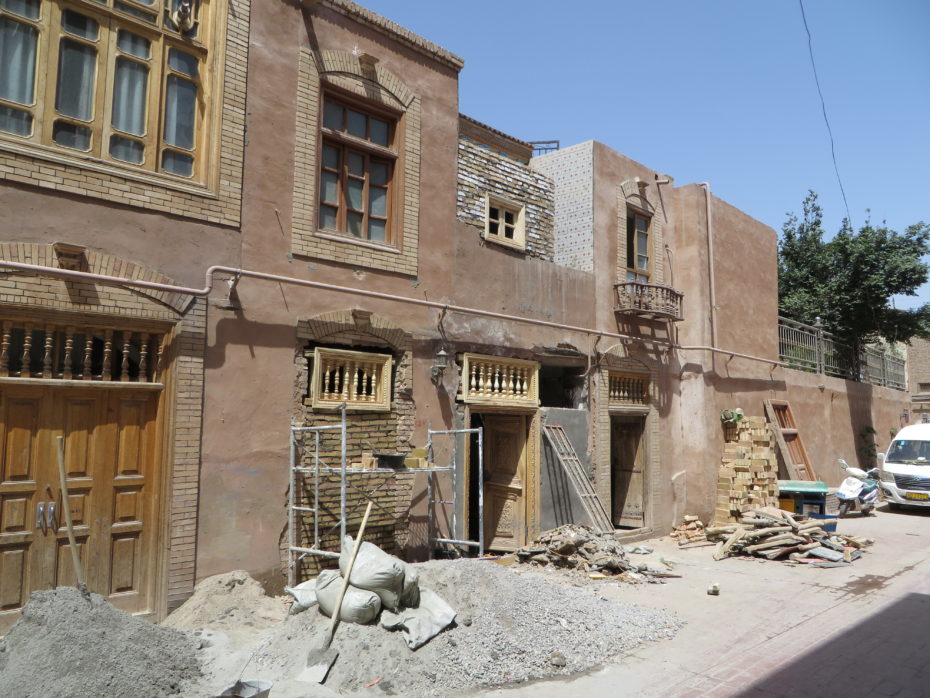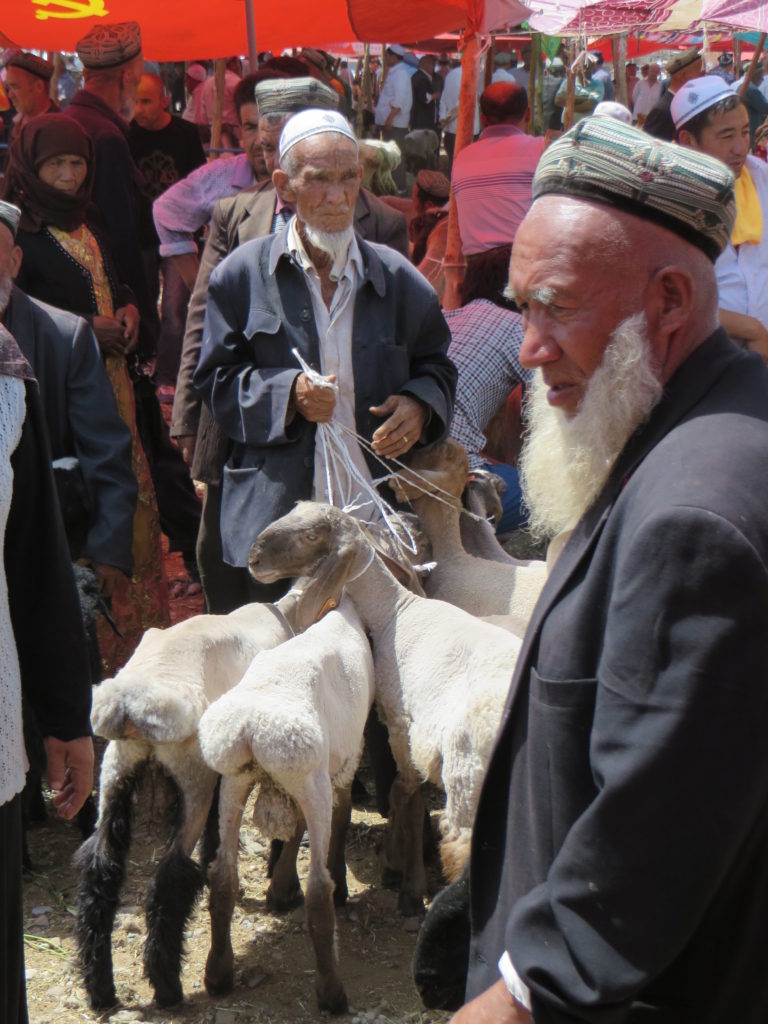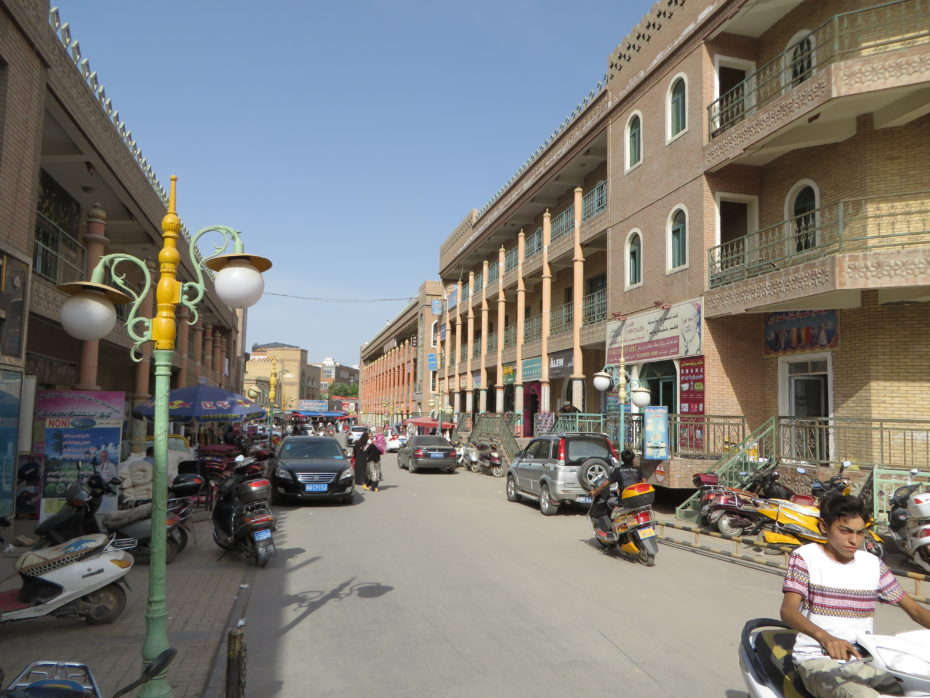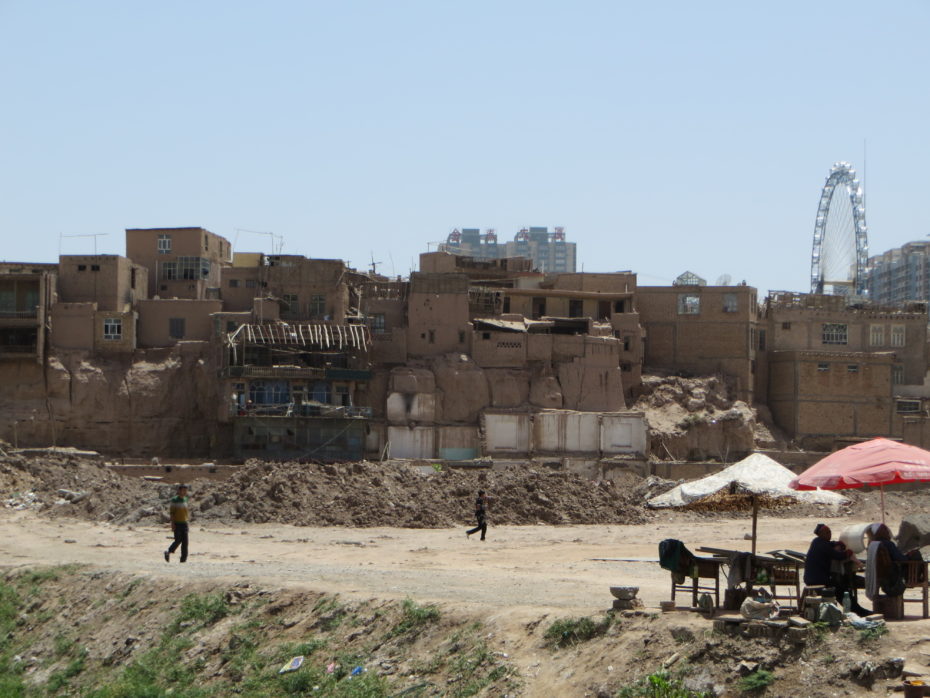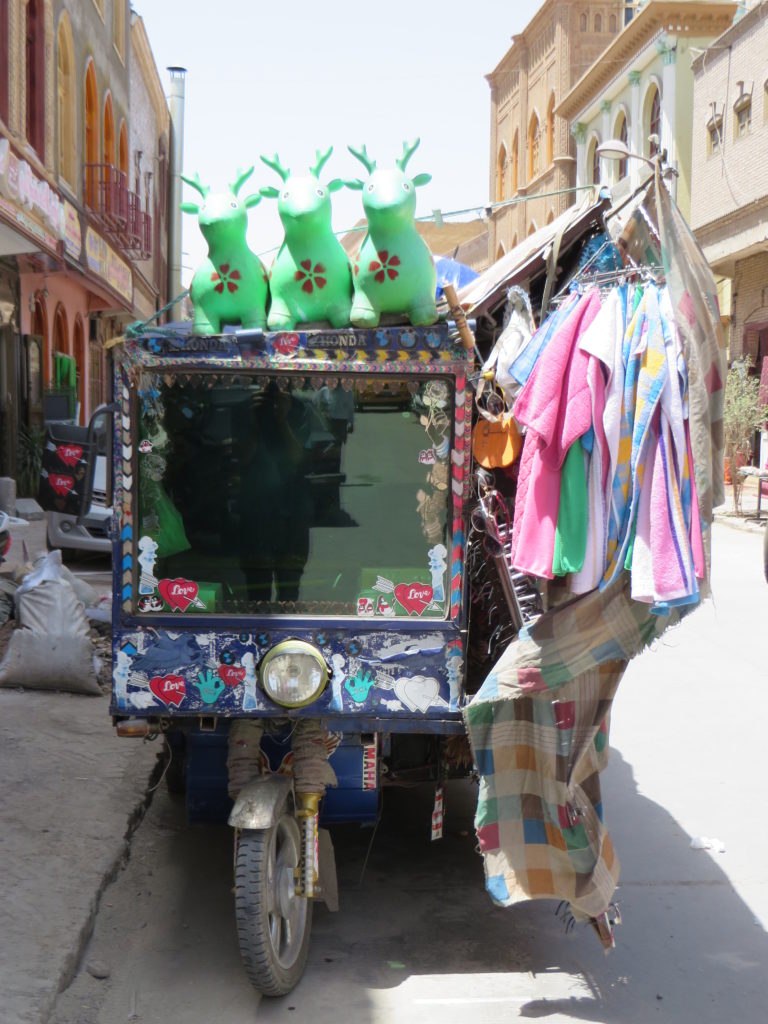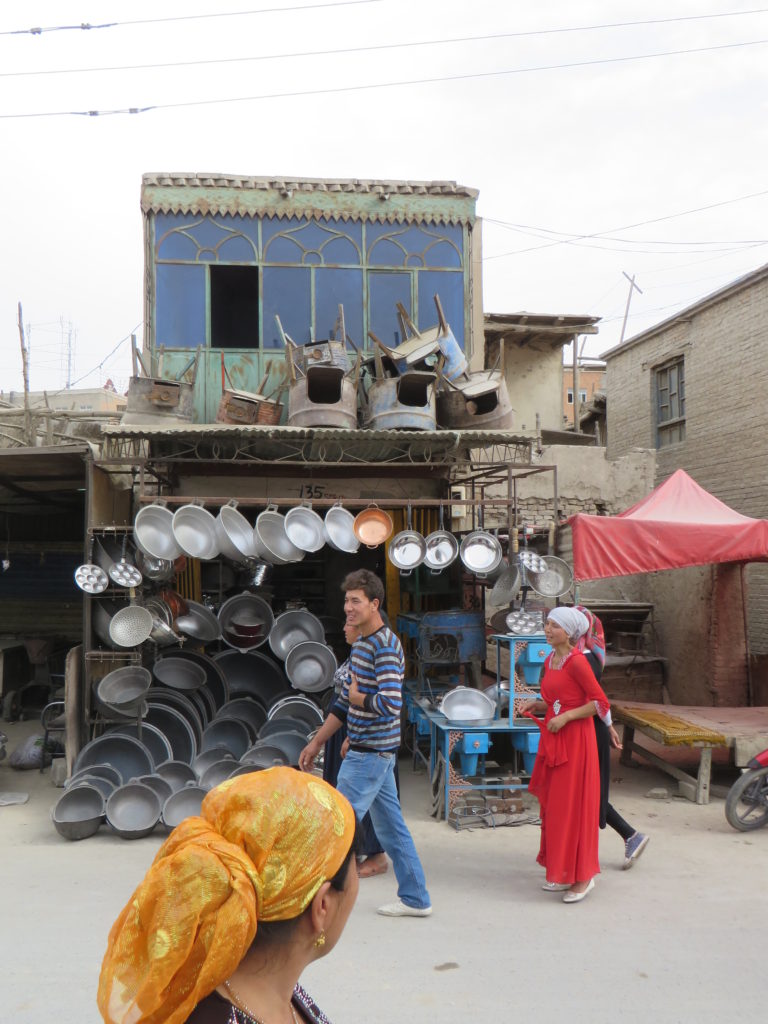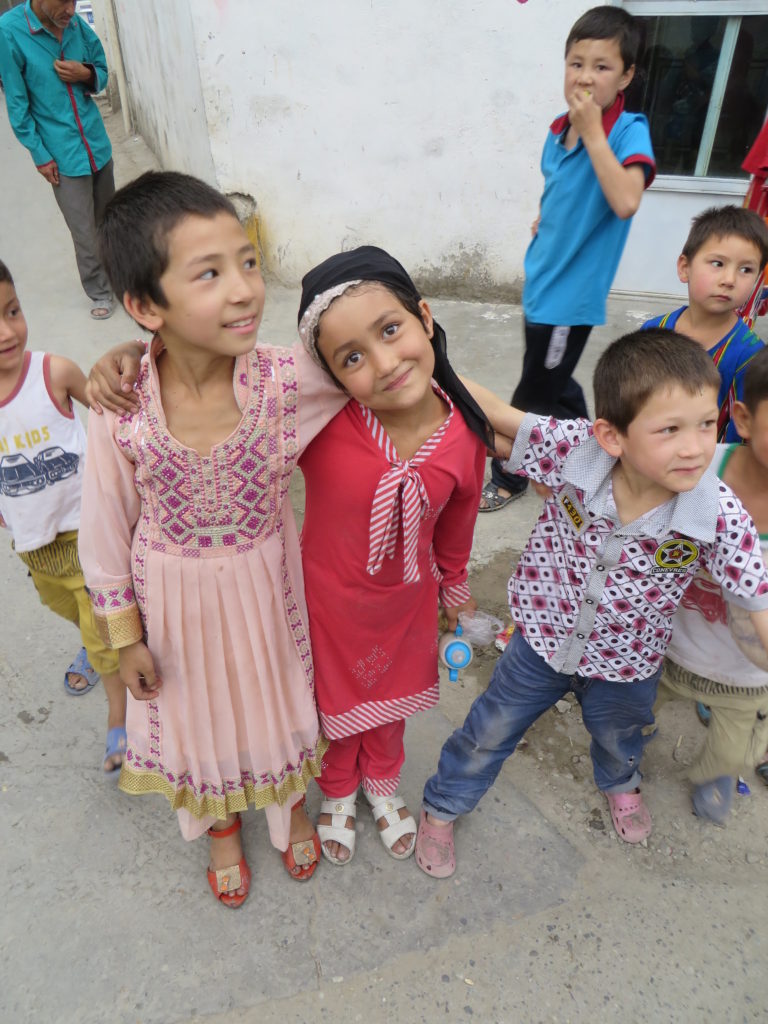IMPORTANT NOTE – in the many years since writing this piece my understanding of the situation in the region has evolved somewhat. Although I stand by the basic issue of the destruction of history here, I hope to resolve the issues with a future visit to the region but until then I am content to leave this here to receive any constructive comments
I arrived late in Kashgar, about ten years late, to find two thousand years of history bulldozed and replaced by a sanitized, theme park vision of history, with generic, mass-produced, “antique” features, that even the stray dog that had stopped to piss on, could tell they were about as historical as the deposit he had left on the pavement that morning. Brown signposts with pretensions of antiquity direct visitors to imaginary realms of a bygone age: remains of the “old city wall”, in fact a pristine section of broken arch, lovingly made from modern materials with a set of moulded irregularities to wish its five years into five hundred; Vegetable Market Road, lacking only vegetables or someone to sell them to provide even the merest glimmer of its former function.
Urban redevelopment has committed many sins in the name of progress, in western Europe in particular, with its post war architects and planners giddy with the dreams of Le Courbousier and Gropius. So why should we care about one more city in a distant land?
If ever there was a city which represented the Silk Road it was Kashgar. To traders and travellers going west it was blessed relief, having left the minimal traces of the Chinese Empire far to the east of the bandit ridden Taklamakan Desert. To those going east it was a vital staging point to prepare for the deadliest part of their journey yet, having already endured the rigours of the freezing passes over the Tien Shan or Pamir Mountains. Also, whether coming north from Pakistan or south from Mongolia it was here deals would be done and goods exchanged for other commodities that would bring greater reward further down the line. More mudanely the Silk Road was less concerned with great, long distance voyages and was, in reality more a network of regional routes, with Kashgar being a vital hub in the system.
From Scythians and Sogdians to Jews and Jungars and any number of ancestral, Asian alliterative amalgams you can think of, the ethnic mixing brought about by trade is still evident even today in the smorgasborg of facial features seen in its people.
One solitary island of dilapidated homes, many abandoned, sits surrounded by a sea of flattened, rubble and mud brick-dust, forlornly awaiting its inevitable demise. Some of its buildings bear tourist information signs, a reminder of an era when someone considered them worth keeping. Myself and two friends sheepishly shuffled through the doorway of one establishment, whose sign promised tea and edible treats. As we sipped tea it soon became apparent that we were an unnecessary intrusion into the daily life of their courtyard and the sign outside was a government imposition. The exorbitant sum asked for, which we were ill inclined to pay was at least an understandable demand for which I could hold no grudge.
Government statements of sanitary concerns and earthquake risks to justify the recreation of the old town may have a small measure of validity but cannot be considered as a credible excuse for such a crass, insensitive project that warrants the replacement of the term philistine with chinese. Besides, the largely Uighur inhabitants were never consulted and it is particularly galling for them, for whom the city enshrined over a thousand years of culture. In a supreme statement of idiotic hypocrisy a sign at the end of Wustanbay Street, for which I have generously corrected the appalling English, states that, “the government attaches great importance to the protection of the street”, talking of its millenia of history and how it sits harmoniously with the Id Kah mosque, the sole remaining historical structure. The appropriate, restrained and moderately toned response to this could only be, “rot in Hell you brain-dead, gormless, fascist fuckwits”.
Alas their historical carpet bombing approach has been inflicted on even their own remnants of Chinese culture elsewhere in the country. Surely future generations of Chinese will look back on this period, which makes the Taliban’s destruction of the Buddhas of Bamiyan look like the height of civilised behaviour, as one of ludicrous, bovine iconoclasm, for which they will forever bemoan their loss. Even so I find it hard to believe that the average Chinese tourist is so imbecilic and infatuated with propaganda to believe that what they are seeing is a genuine piece of history.
Three hours to the south-east of Kashgar the town of Yarkan at least offered a glimpse of the region’s old town life. Its delightful and slightly shambolic jumble of buildings from many eras oversaw a chaotic, organically evolved street life, lacking from the sterilized Kashgar where traders are alloted numbered plots. Although no one could accuse Kashgar’s inhabitants of being unfriendly, the tourist in Yarkan is assured of near adulation from its inquisitive people and hordes of excitable children clamouring to have their photo taken.
I can only pray it is left that way.




